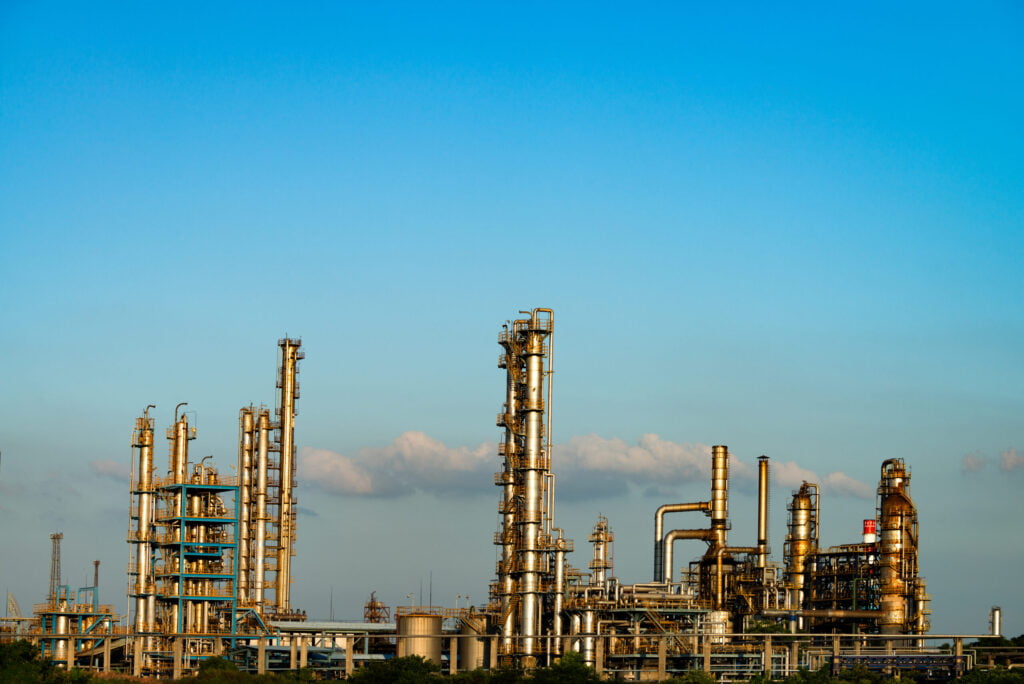Navigating the world of machinery can be daunting for any business owner. With advancements in technology continually reshaping the manufacturing landscape, staying updated with the latest trends and innovations can mean the difference between thriving or struggling in today’s competitive market. Chief among these game-changing developments is the innovations in oil-filling machinery, which have transformed how businesses handle their production processes. Keep reading to learn more.
The Evolution of Oil-Filling Machinery
In the past, oil-filling machines were cumbersome and inefficient, requiring substantial time, effort, and resources. They were manually operated, leading to errors and inconsistencies, compromising product quality, and limiting output. The evolution of the oil filling machine has seen the introduction of automated systems, drastically reducing the time taken to fill oil in containers while increasing efficiency and productivity.
Modern filling machines are also more compact, reducing the space required for their installation. This aspect is particularly beneficial for businesses operating in limited spaces. In addition to saving space, these machines require less maintenance, further reducing operational costs.
Moreover, the evolution has not stopped but continues today with cutting-edge innovations that leverage the power of technology. These include intelligent sensors, advanced algorithms, precision engineering, and more. The advancements in the oil-filling machine sector have revolutionized many businesses’ operational efficiency and profitability, particularly in the manufacturing industry.
How Automation Is Changing the Game

Automation in oil-filling machinery is dramatically reshaping production processes. These machines can fill containers with precision and consistency while identifying and rectifying bottlenecks. Automation has replaced the need for intensive human labor, offering businesses the opportunity to reallocate their workforce to more strategic tasks that add value to their operations. This shift has not only streamlined the filling process but has also improved product quality and reduced wastage.
In addition to efficiency and accuracy, automation also enhances safety. Manual filling operations are often associated with spills and leaks, posing potential safety risks. Automating the process eliminates much of the risk, ensuring a safer working environment and reducing the likelihood of accidents.
Another significant benefit of automation is the reduction of production costs. With an automated oil-filling machine, businesses can maintain a steady level of production, even during off-peak hours or when faced with labor shortages. Simultaneously, the production quality is maintained, ensuring high standards are met, and customer satisfaction is achieved.
Technological Integration and Future Trends
The integration of technology into oil-filling machinery has opened up new possibilities for businesses. Technological advancements such as the use of the Internet of Things (IoT) have enabled the development of smart machines that can self-monitor and detect potential issues before they become significant problems. This preemptive approach to maintenance can save businesses significant amounts of money and reduce downtime in the long term.
One of the key benefits of integrating technology into oil-filling machinery is cost savings. Traditional maintenance practices often rely on scheduled inspections and reactive repairs, which can be both time-consuming and expensive. By using smart machines equipped with IoT capabilities, businesses can detect and address problems before they escalate, significantly reducing the risk of costly breakdowns or equipment failures. This preemptive approach minimizes unplanned downtime, which can significantly drain productivity and profitability.
Artificial intelligence (AI) and machine learning (ML) are revolutionizing various industries, and the field of oil filling is no exception. These advanced technologies are being employed to enhance the efficiency of the oil-filling process. Predictive algorithms, powered by AI and ML, are being used to analyze vast amounts of data and make accurate predictions about different variables that affect the process.
By using AI and ML, companies can optimize their production workflows and improve the overall efficiency of the oil-filling process. These technologies can analyze factors such as temperature, pressure, viscosity, and flow rates to determine the ideal conditions for filling oil. By making real-time adjustments based on predictive algorithms, companies can ensure that the oil-filling process is conducted at its optimal level.
Moreover, the future of this industry points towards an increased reliance on data analytics for machine performance. With advanced technologies like AI and ML, companies will be able to gather and analyze large volumes of data from sensors and machines. This will lead to a better understanding of the production process, identifying areas that can be further optimized and driving continuous innovation.
As the world becomes more and more digitized, it’s apparent that the future of filling machinery is intertwined with technological advancements. Integrating innovative solutions into these machines will only continue improving efficiency, accuracy, and safety while reducing costs and freeing up resources for other essential operations.
The Impact on Cost Efficiency and Profitability
The innovations in oil-filling machinery have had a transformative effect on cost efficiency. The ability to automate the process, combined with improvements in accuracy and speed, has reduced wastage and contributed to substantial cost savings. By streamlining the production process, businesses can produce more products in less time, enhancing profitability.
Additionally, the reduced requirement for manual intervention has lowered labor costs, allowing businesses to invest these savings in other strategic areas that can improve their bottom line. Moreover, the low maintenance demands of these machines significantly reduce downtime and the associated costs.
The advantages of modern oil-filling machinery go beyond just financial aspects. With improved efficiency, businesses can also increase their production capacity to meet growing demand and expand their market share in a competitive industry.
In a competitive industry where every minute counts, the speed and efficiency offered by modern oil-filling machinery can make a significant difference. It allows businesses to keep up with market demands, preventing any delays in production and ensuring timely product delivery to customers. By efficiently filling oil containers, companies can maintain a steady flow of supply and meet their customers’ needs in a timely manner, thereby enhancing customer satisfaction.
The increased production capacity enabled by modern oil-filling machinery allows businesses to expand their market share. With the ability to produce more products in a shorter period, companies can explore new markets and cater to a larger customer base. This expansion can result in increased sales and revenue, providing opportunities for business growth and market dominance.
Rethinking Sustainability: Environmentally Friendly Manufacturing Practices
Environmental sustainability has become a central concern for businesses worldwide, and innovations in oil-filling machinery have played a vital role in promoting greener manufacturing practices. Modern machines are designed to minimize waste, reduce energy consumption, and reduce carbon footprint. These features align with the growing consumer demand for environmentally friendly products and practices.
Apart from promoting sustainability, these machines also comply with stringent environmental regulations imposed by governments worldwide. By investing in such technology, businesses protect the environment and future-proof their operations, ensuring compliance with emerging regulations.
Overall, these innovations serve a dual purpose. They help improve a company’s bottom line while also contributing to the larger global initiative of implementing sustainable manufacturing processes. In this light, businesses have a lot to gain by incorporating modern oil-filling machines into their production lines.
The Future Looks Bright With Oil-Filling Machinery Innovations

The innovations in oil-filling machinery have revolutionized industrial production processes, yielding increased efficiency, cost savings, and enhanced profitability. As technology advances and new trends emerge, businesses can expect these machines to continue improving.
With the integration of automation, artificial intelligence, and sustainable practices, the future of oil-filling machinery looks promising. Businesses looking to stay competitive in today’s fast-paced market should consider adopting these advancements to reap the rewards.
The impact of these innovations on business growth and manufacturing processes cannot be overstated. Modern oil-filling machines are effective tools for improving efficiency and productivity and driving forces toward a more sustainable and compliant industry practice.












